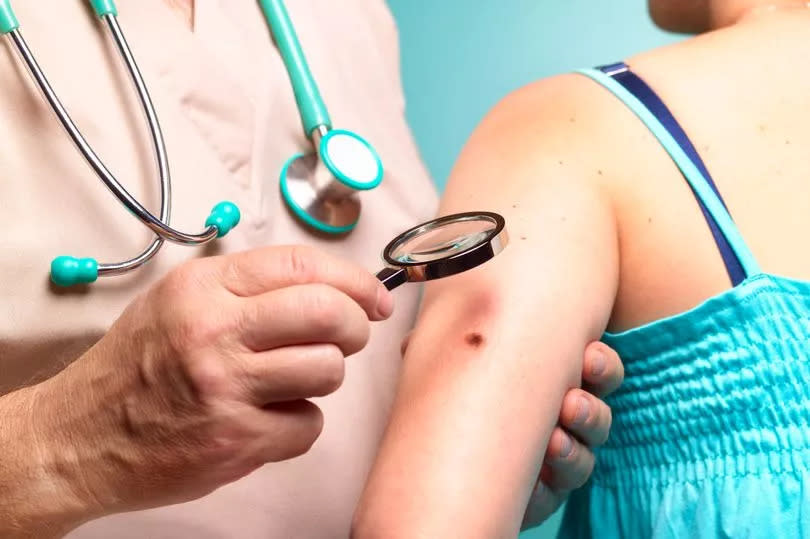Five skin cancer symptoms and exactly what changes you should be looking out for

NHS experts says it's important to get any symptoms of skin cancer checked as soon as possible.
The main cause of melanoma is ultraviolet light, which comes from the sun and is used in sunbeds. Things that increase your chances of getting melanoma include your age and having pale skin, a large number of moles and a family history of skin cancer, the NHS says.
It's often possible to prevent skin cancer by being careful in the sun – for example, by using sunscreen and reapplying it regularly. With over 16,000 new cases of melanoma skin cancer annually, as reported by Cancer Research UK, between 2016 and 2018, it remains a big concern.
When it comes to skin cancer, spotting the signs early is key to successful treatment, reports the Mirror. The symptoms can be varied, making it important to stay vigilant. Here’s what to look out for.
Sores that linger
Keep an eye on any sore or patch of skin that just won't heal, especially if it lasts for more than four weeks. It might look transparent, shiny, or pink, with raised edges and possibly feel tender or rough.
Stubborn ulcers
If you notice an area of skin breaking down into an ulcer and it sticks around for more than four weeks without a clear reason, it's time to get it checked out.
Suspicious lumps
Even small, slow-growing lumps that appear shiny and pink or red shouldn't be ignored.
Red patches
Red patches on your skin, especially if they're itchy, warrant attention. While they could be harmless, it's better to be safe and have them examined.
Changes in moles or freckles
Any alterations in the appearance of moles or freckles, like changes in size, shape, or colour, could indicate melanoma, a type of skin cancer that requires prompt medical attention.
See a GP if:
you have a mole that's changed size, shape or colour
you have a mole that's painful or itchy
you have a mole that's inflamed, bleeding or crusty
you have a new or unusual mark on your skin that has not gone away after a few weeks
you have a dark area under a nail that has not been caused by an injury
"Finding a melanoma as early as possible can mean it's easier to treat," says the NHS. More information is available here.

 Yahoo News
Yahoo News 
